The trip to Calcutta1 didn’t start well. The train was delayed by ten hours. As a result, one of the first things I did on reaching our hotel, the Great Eastern, commissioned in 1840 during colonial rule, was to cancel our return train and book air tickets. Then I was ready to see the city.
For too long associated in the eyes of the world with the life of Mother Teresa — her work among the poor, the sick and the dying — Calcutta is desperate to become a modern city. After decades of Communist rule, the state’s coffers are severely stressed, its stature as a centre of cultural and intellectual thought declining. There are many things wrong with Calcutta, and, paradoxically, many of the same things make it right.
Of tram lines and Ambys
The Calcutta Tramways Company rolled out the first tram on Calcutta roads at the beginning of 1873, only for it to be discontinued at the end of the same year. But, since it restarted in 1880, it’s been rattling along, adding new routes and closing old ones despite criticism that the trams are too slow for today’s traffic.
Of the 270 vehicles, the majority are steel-bodied cars dating back to the mid-1980s. Then there are around 50 or so wooden-body cars going back even further, to the ‘40s and ‘50s. Their main advantage is in providing Calcutta with an inexpensive and non-polluting means of transport.
Dwindling passenger numbers, largely because of poor service and shoddy condition of the trolleys, has hit the tramways especially hard. The system will require more than funds to survive. It will require a complete overhaul of the tracks and tramcars, and it will need to get back to being relevant again in today’s competitive economic climate. Otherwise, for many Kolkatans, it will be with a twinge of sadness that they will see the tram disappear in the future. But trams aren’t the only historic feature of Calcutta’s streets…
The yellow cab has reached iconic status. More so after BBC’s Top Gear showed one besting the fabled London black taxi. Once ubiquitous on Indian roads, the Ambassador or Amby, has all but been relegated to the scrap heap of history.
Sometime in the late 1960s to early ‘70s, my family owned a lime green Mark 2. On the road, I could never tell which gear was engaged in just by looking at the lever. First and fourth were all the same as the lever always flopped back down.
The Ambassador has been in production since 1958, mostly unchanged from the original British-manufactured Morris Oxford. Over the years, Hindustan Motors introduced new models, naming them Mark 1, 2 and 3.
Bright yellow and blessed with a thick metal skin that deters dents, a backseat that reminds you of a couch and an enormous “dicky”2, the Ambassador can still be seen lumbering along Calcutta roads. Loyal and stubborn taxi drivers refuse to switch to newer car models such as the Tata Indigo or the Maruti Swift, recollecting ties reinforced through hard-times shared together.
Recently, the cab-hailing company, Ola, announced that you can book an Amby cab for your ride via their mobile app. You pay an extra charge for the convenience over and above the government fixed metre rates. However, I found it proper to just flag them down, the old fashioned way.
The Rickshawallah
Calcutta’s rickshaw is as iconic as its Victoria Memorial and a remnant from an era under British rule. But the debate on what to do about the rickshawallahs of Calcutta drags on.
Calcutta wants desperately to drop its “dying city” tag after decades of Communist Party rule and talk instead about development, investment and modernisation. Where does the rickshawallah figure in the plans of a city wanting to lift its image?
The case to abolish the rickshaw argues that it’s just wrong on so many levels for anyone to be pulled by another fellow being. And many Kolkatans do refuse their services. But the case to retain argues that many Kolkatans see them as a convenient way of getting about in the city’s narrow and crowded lanes, especially when it rains. Unless the government steps in with a rehabilitation plan, it would be just as wrong to deny them their only source of livelihood.
The Bahakwallah
“Bahak” in Bengali means carrier. The bahakwallahs of Calcutta use cycle-rickshaws and their backs to transport sacks of grain, bundles of books, building materials, food items, fuel and anything else that will go on a carrier. In a crowded city with its narrow, congested streets this is often the preferred way to send goods from one point to another.
Burdened with heavily loaded stacks, secured with nylon rope, and, depending upon the weather, protected with a square of tarpaulin, the bahakwallahs negotiate their carts through traffic to destinations around the city.
The Coffee House on College Street
Across the road from Presidency College is Calcutta’s favourite adda, or meeting place — the Indian Coffee House on College Street. The Coffee House has always been a hotbed of political and cultural discourse, frequented by Bengali giants such as Rabindranath Tagore, Subhas Chandra Bose, Satyajit Ray, Aparna Sen and many more. That itself is an indication of its vintage.
The place has been hugely popular with struggling poets, intellectuals, artists, and musicians since its inception in 1876 when it was called Albert Hall. Today, students from the colleges nearby are its main clientele.
The first-floor hall shares its high ceiling with the encircling balcony, preferred by young couples, from where one can survey white-uniformed waiters in turbans, balancing trays, weaving through the mass of packed tables below.
While lesser artworks line the walls of the coffee house, one entire wall is dedicated to a single large portrait of Tagore in his younger days.
Even as stiff competition from a Café Coffee Day or a Barista make for meagre profits, the Coffee House management is loath to raise prices for fear of the intense uproar and debate it will trigger. So, although the menu is revamped — now one can order chowmein and sandwiches besides the staple fare of pakodas and coffee — the prices have not.
Bow Barracks
Taking its name from Bowbazar, the neighbourhood in which it is located, and after the tenements built to house British troops in the 1900s, Bow Barracks is a row of three-storied redbrick buildings, home to a dwindling community of Anglo-Indians, Muslims and Chinese in the heart of Calcutta.
The seventy-odd families still living in the 134 flats face an uncertain future. Because of the deteriorating state of their homes, built over a hundred years ago, the state government declared their buildings unsafe in 1980. The families continue to resist plans to demolish their homes.
Some years ago a film, Bow Barracks Forever by filmmaker Anjan Dutt, attempted to tell the story of a small but resolute Anglo-Indian community in the heart of bustling Calcutta trying desperately to keep their hopes, dreams, aspirations and identity alive. It wasn’t received well by the Anglo-Indian community, dismissing it as more fiction than fact.
The Bow United Organisation represents the Anglo-Indian community in Bow Barracks. They organise the annual Christmas festivities and other events including hockey and football matches, undertake development projects and general upkeep of the area.
The Gateway to Calcutta
Spanning the Hooghly, a branch of the Ganges, the Howrah Bridge, connecting Calcutta with Howrah, is the sixth-longest cantilever bridge in the world. Opened to the public without fanfare in 1943 — in fear of Japanese attacks — it has been a witness to history in pre- and post-Independence India, celebrated in the country’s and city’s literature, art, cinema and culture for the last 77 years.
Howrah Bridge, also known as Rabindra Setu, holds the record for being the busiest suspension bridge with an estimated daily average traffic of 100,000 vehicles and 150,000 pedestrians. It is also one of the longest cantilever bridges in the world. Early in the morning, it is quiet enough for a bather to take a solitary dip in the waters below.
The flower market at Mallick Ghat
Established in 1855 on the eastern bank of the Hooghly, Mallick Ghat is quite possibly the largest flower market in Asia. With 240 shops and thousands of flower sellers jamming the muddy and slushy pavements, it is not a place for the faint of heart. The market is open from four o’clock in the morning until midnight every day.
Business is good but could be better if superior infrastructure were in place. Plans are afoot to revamp the ageing market and bring it up to an international standard.
Flurys of Park Street
The famous tearoom on Park Street has its own book called, “Flurys of Calcutta: The Cake That Walked”. In 1927, Joseph Flury opened a confectionery shop on Park Street that came to be synonymous with Calcutta.
Remodelled in 1991, the tearoom was given a facelift by new owners — to a 1930s style! This drastic change Kolkatans took in their stride so long as their beloved pastries and chocolate cakes, their Earl Grey and English Breakfast remained the same.
Ahura Mazda and the Amesha Spentas
At the Parsi fire temple, called an agiary3, on Metcalfe Street in Calcutta, there is a modern-day mural depicting the amesha spentas, or archangels, around Ahura Mazda, the creator of the universe and cosmic order.
The six divinities he created to help him in governing the cosmos are, from the left: Haurvatat, representing wholeness and perfection, Asha Vahishta, for order and truth in the cosmos, Vohu Manah, for wisdom and love, depicted here with an animal, Ameretat, for immortality, depicted here with green palm trees, Spenta Armaiti, for devotion and faith, seen here in a nun-like habit, and Khshathra Vairya for metal, holding up an iron ring in one hand and a sword in the other, who presides over Ahura Mazda’s kingdom.
Two other panels show “A Priest and Spenta Mainyu the Holy Spirit” created by Ahura Mazda to oppose Angra Mainyu, the destructive spirit.
Visitors who aren’t Parsis probably aren’t aware this exists as it is up a marble staircase, just outside the prayer hall where the urn with the fire is kept, and to which entry is restricted to Parsi Zoroastrians only. This stained-glass window and others in the agiary are designed by Katayun Saklat.
Game over
A memorial to Queen Victoria was suggested by Lord Curzon in 1901. Calcutta was then the capital of India and Lord Curzon the Viceroy. By the time the Victoria Memorial opened to the public in 1921 the capital had shifted to Delhi.
The statue atop the dome is the Angel of Victory. An old Queen Victoria presides over an early morning game of badminton.
The lifeline of Kolkata
Filmmakers have long been inspired by Jean Renoir’s 1951 coming-of-age story, The River, to set the Hooghly as a backdrop and metaphor in their films. Notable among them is Goutam Ghose whose 1984 film, Paar, portrays the struggles of a migrant family in Calcutta trying to find work. There is a scene in the film where he depicts a river crossing, undertaken by the main characters, as a metaphor for the indomitable human spirit.
The river is deeply rooted in the Bengali psyche. The last few years have seen an awakening of this realisation with the launch of several projects initiated by the state government to clean up the riverfront. Chief among them are the ghats on either side of the river.
Along the Hooghly are several ghats — the most famous being Princep Ghat, built in 1843. Named after James Princep, an officer of the East India Company, best known for deciphering the scripts on the stone edicts of Emperor Ashoka, it’s now a popular evening spot with the locals.
This is where they come to hop onto the Circular Railway, which connects almost two dozen stations across the city, or hire a boat called a nouko, that comes complete with awning and lantern, to glide under the Howrah Bridge.
Tagore and Bose

Rabindranath Tagore and Netaji Subhas Chandra Bose are the indisputable duos of Bengali giants. Their statues and portraits dot the city. Tagore’s elder son Rathindranath had returned from the United States in 1938 after completing his studies. As his father was not keeping well, he bought him a pair of 1933 Humber sedans from HH Lilley, Rootes Ltd, the only Humber dealer in the sub-continent. They turned out to be his father’s favourite cars, treasured even over the Wolseley he owned for most of his life. He would take a ride in them several times a day.
Freedom fighter Netaji Subhas Chandra Bose was placed under house arrest by the British in 1941. His nephew, Sisir Kumar Bose, helped him give the British the slip in what would later be referred to as the ‘Great Escape’ in an Auto Union (now Audi) 1937 four-door Wanderer Sedan (see above).
This famous getaway car has a four-speed manual transmission, a 1767cc four-cylinder engine that is capable of a top speed of about 65 mph. Good enough for a getaway, apparently. In 2016, Audi was entrusted with the job of restoring the car and the colour is now a more fetching two-tone affair.
Fare thee well, Kolkata
As Kolkata goes about its determined transformation into a modern city, let’s hope that the words of former British architect and mayor of Bristol, George Ferguson, when he made a visit to the city, don’t fall on deaf ears:
“One can fall into the trap that the only heritage worth preserving are grand buildings like the Victoria Memorial. We forget day-to-day heritage. Even the commonplace houses where people live and make up neighbourhoods are heritage for they define the city.”
The photographs here were taken with a Panasonic GF1 with the versatile and sharp little 20mm pancake lens.
- I grew up at a time when Mumbai was Bombay and Kolkata was Calcutta. ↩
- The Indian term for the car boot (English) or trunk (American) ↩
- An agiary is a Parsi fire temple in which the fire is never put out and rituals are performed by Parsi priests. ↩


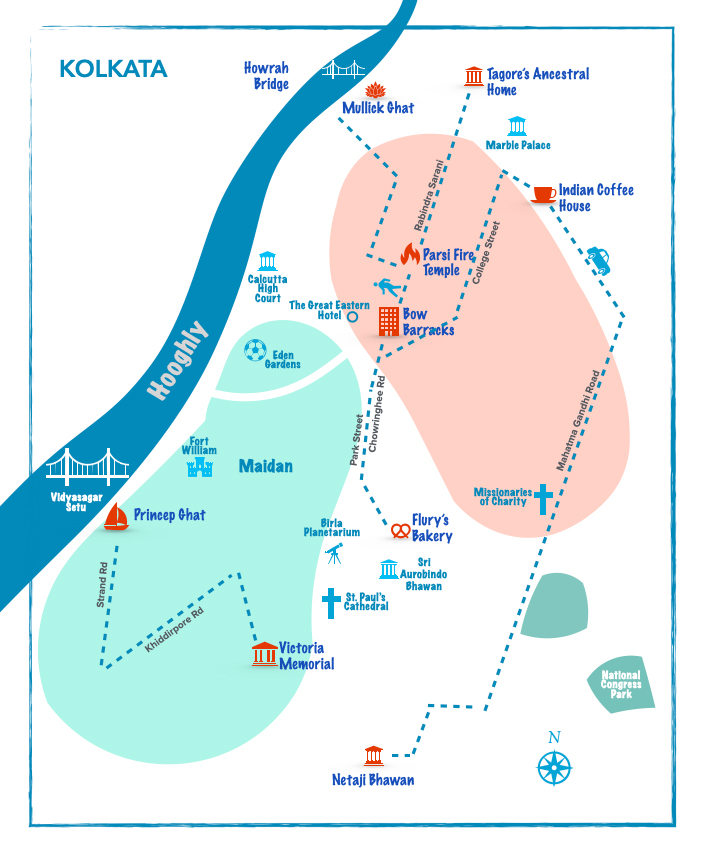




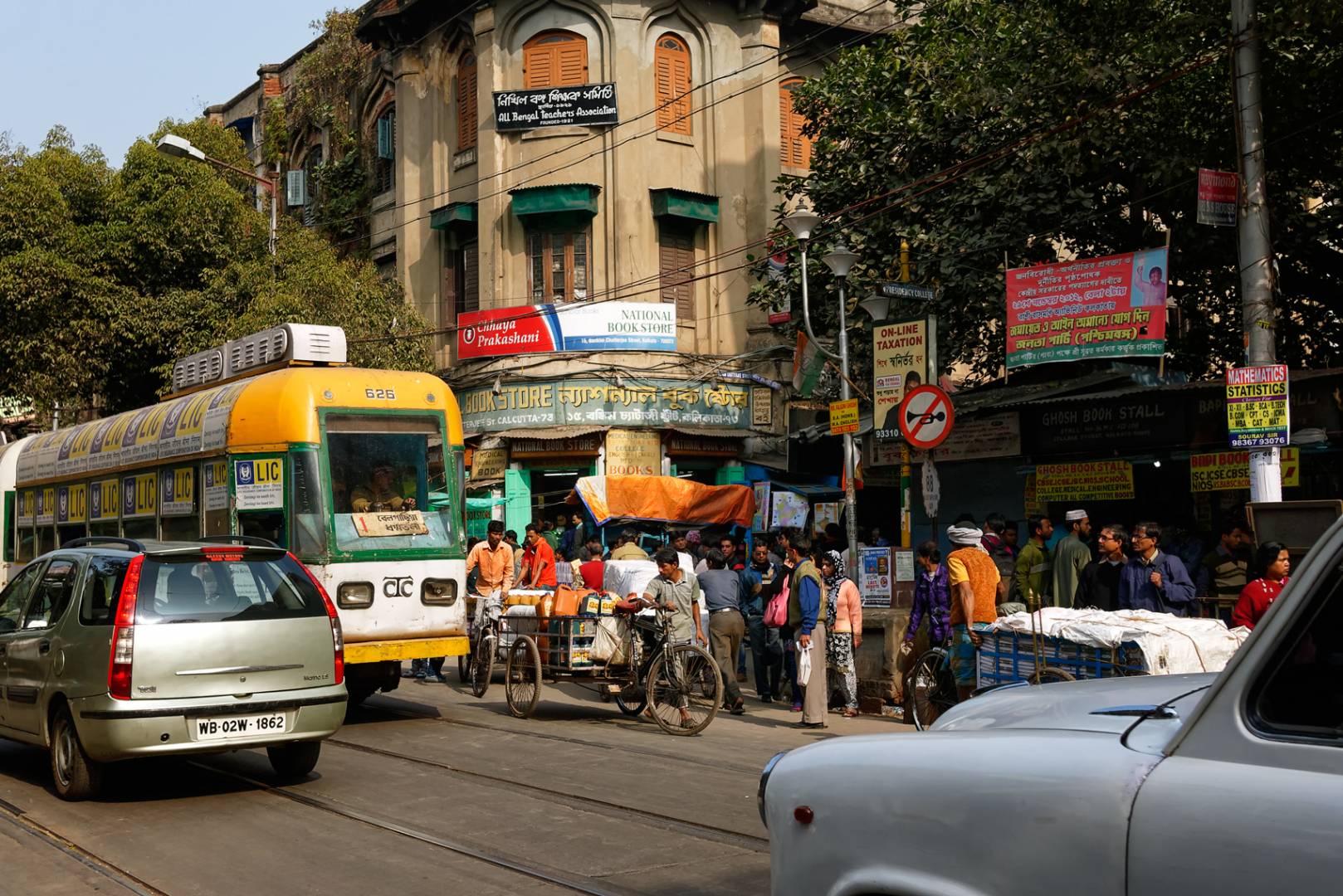

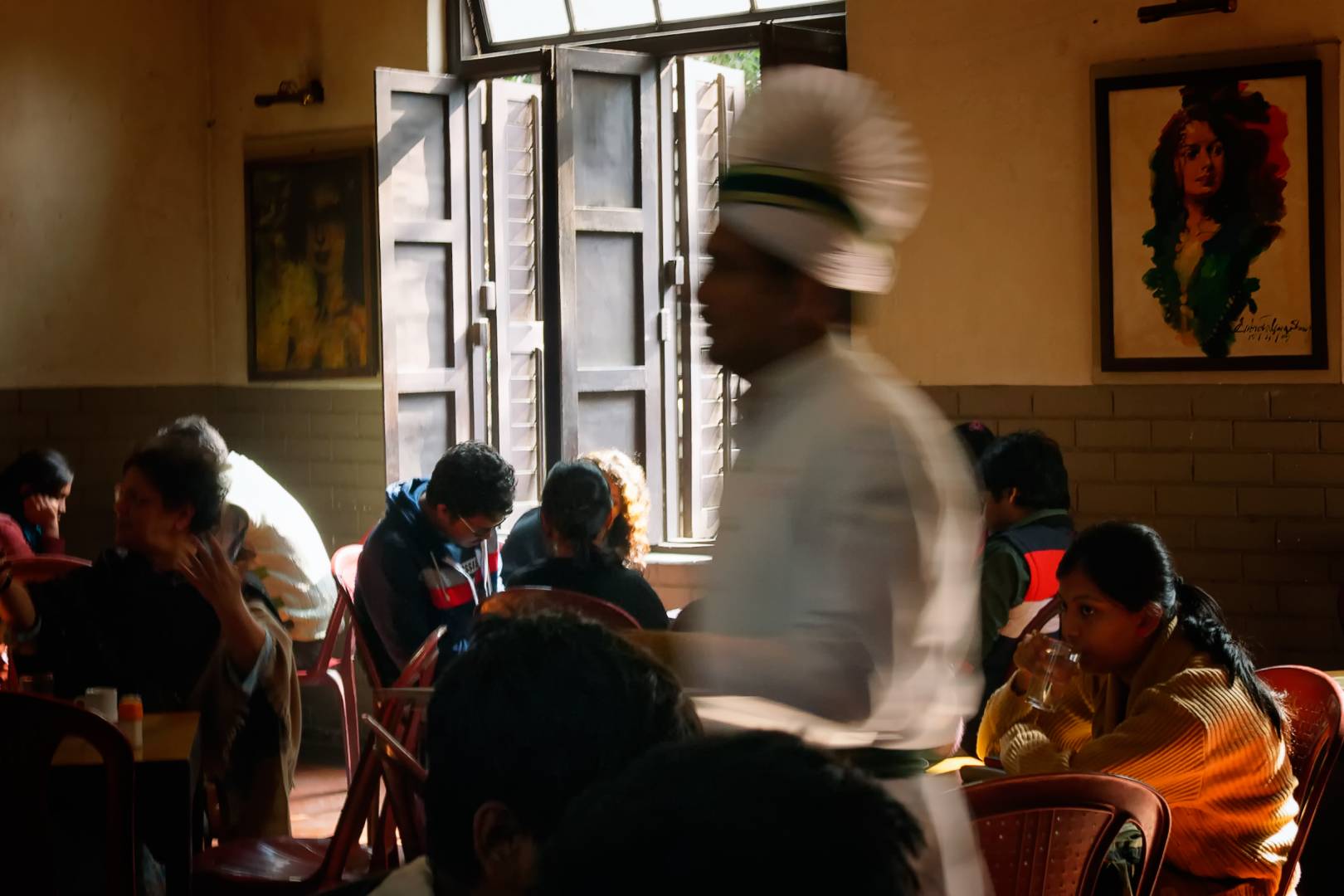
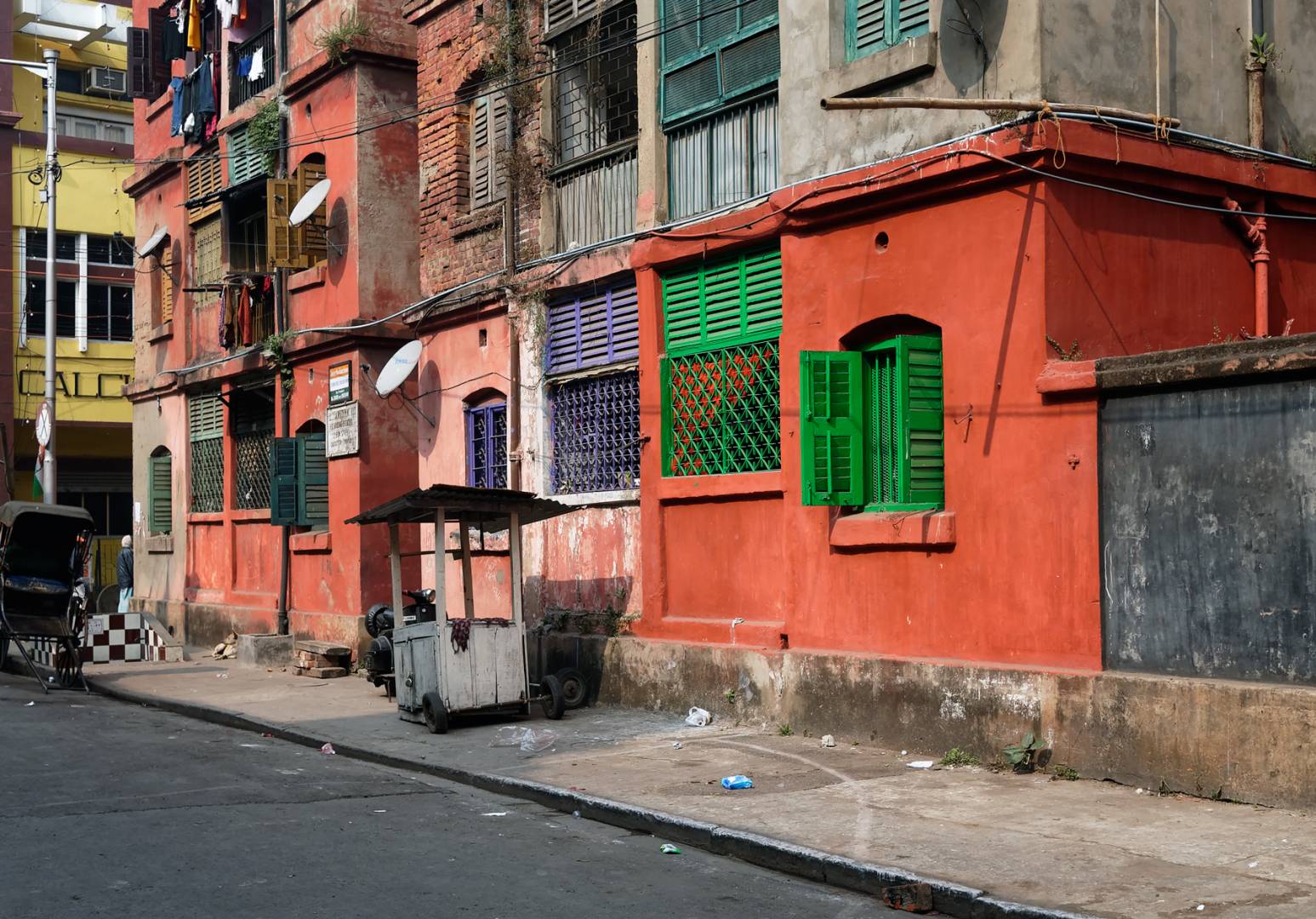





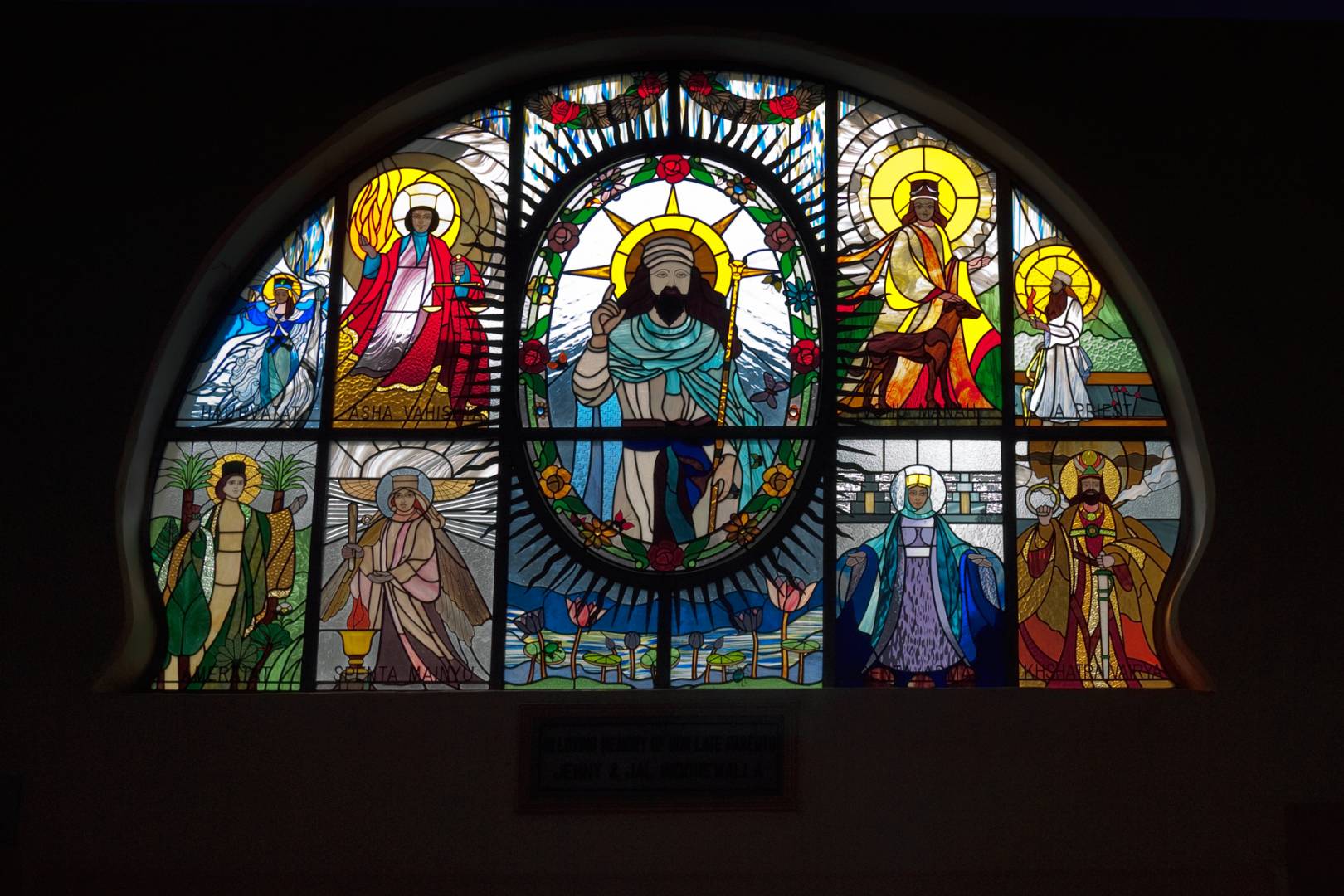
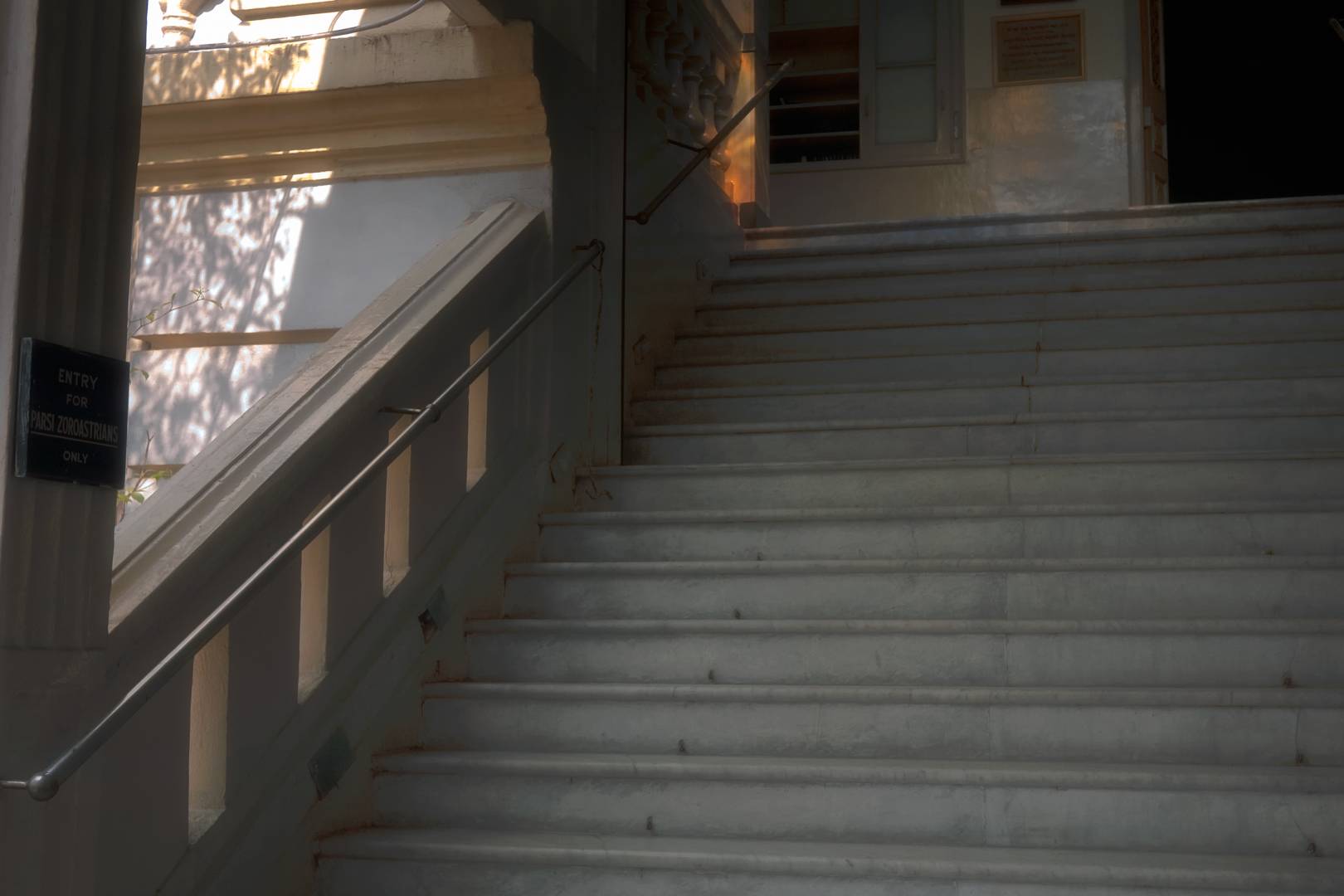
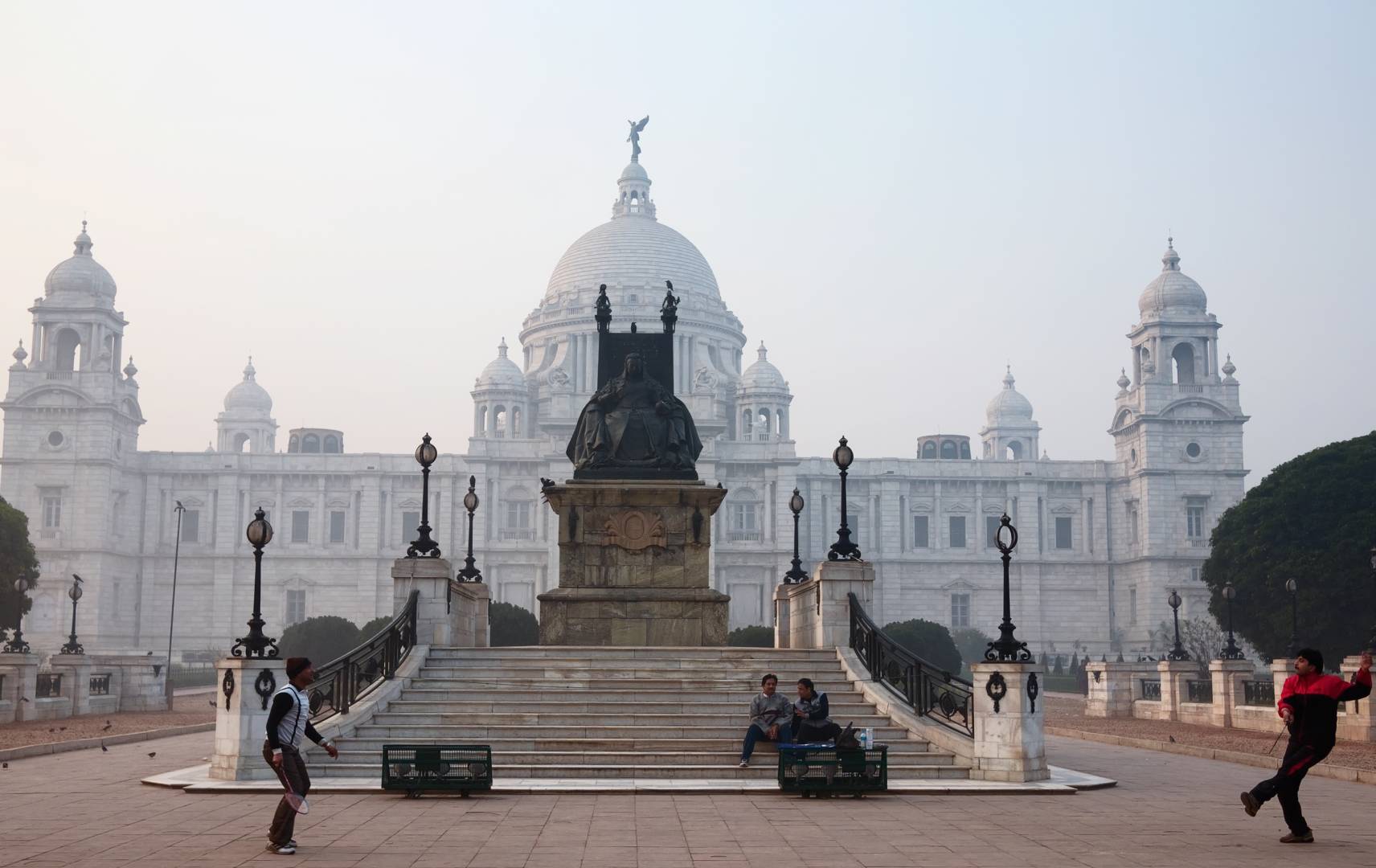
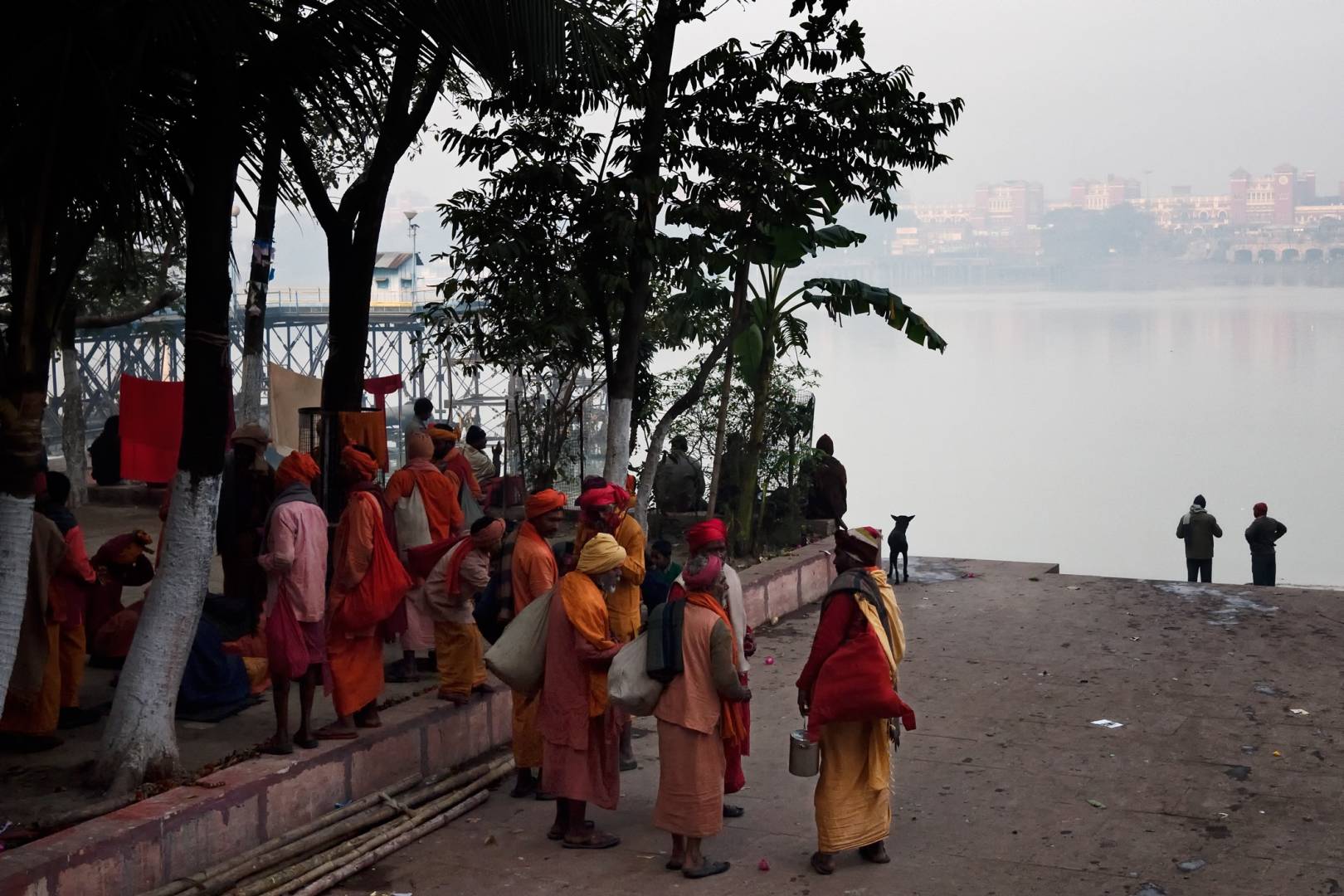




Fariz what a treat, this travel log on Kolkata. I have not been to this city but when I do visit your images will remain in mind. From the story of the Rickshawala’s to the festivities on Park Street. Loved the images and the descriptions of each place.
What a beautifully written article and with great photos to complement it.
Thank you Tom. That is very kind of you to say.
Farhiz, thank you for your fascinating article and atmospheric photography of your historic and teeming city.
Such an abundance of interest for the perceptive photographer. I am amazed to learn that the ubiquitous Ambassador is still operational, in numbers. That generation of vehicles was designed to be repaired, often by the owner. Try that today with the latest generation of automobiles.
Thank you so much David. The Amby is rarely seen on Delhi roads anymore—one hotel in the city kept a few as a novelty for their guests to ride around in. It was for the reason you mention that it was the favoured car by taxi drivers.
Again Farhiz, you have educated, entertained, given my eyes a new banquet feast. Thank you, if you get a chance I want to suggest an article on the Kumbh Mela pilgrimage by four photographers, they are tied in with Kamalan Travel somehow, and maybe you should enquire about sharing your photo talent. You can find article in Hasselblad stories, think you will enjoy they have the same love for India as you. Please stay healthy and well.
Thank you John. I will try and find the link. I’m happy you liked articles and photos.
Thank you for these images Farhiz. They brought back great memories of ten days that I spent in Kolkata in the early 1980s, or Calcutta as it was then known. Even more meaningful in that I also stayed at the Great Eastern Hotel, we spent some wonderful late evenings there sitting and talking with the house staff after they finished their work shift – most of them had worked there all their lives and were able to tell wonderful stories of the hotel guests and happenings from times gone by.
Thank you Wayne. Nice coincidence about the hotel.
This is a wonderful insight into Kolkata and its culture. India is not just one culture, but many and they are hugely diverse. The rickshaw is familiar to me from Delhi and, yes, I did feel sorry for the poor guy who was pedalling my wife and I around narrow streets. In the narrowest alleyways it was quite a jam competing with the bahakwallahs both on wheel and on foot. Sometimes there was almost no space around the wide loads but did not stop our driver. I got a few facefuls of straw and other materials as we squeezed by.
Your photos are wonderful and they remind me of how good the GF 1 was. I no longer have mine, unfortunately.
William
Thank you William. You’re a brave man to sit in one of those old Delhi rickshaws. These are things that make for great memories.
Just fabulous! A wonderful journey taken with a knowledgeable guide. Thank you!
Thank you Chef! And I didn’t even touch upon the food scene. I’m sure you’ll like it there.
Educational, fine photos and an enjoyable read.
Thanks Dan. I’m glad you liked the article.
Hi Farhiz, a very informative travel log and I love the treatment you have given to the pictures. Love the saturated colours full of life 🙂 with gf1 and my favourite lens 20mm. I suppose you processed from raw files? Thanks.
Hi Mahesh, thank you very much. Yes, these are all RAW images. The GF1 and the XV are the only cameras I have now.
Thank you for this wonderful journey around the history, architecture and colourful city. So much heritage and interest to keep many a photographer engaged for weeks on end.
Enjoy the weekend, and keep safe folks.
Thank you Dave. A place like Bow Barracks alone could keep a photographer busy for days.
Wonderful article and images Farhiz. I can feel the heat and the dust when watching your images. Your mentioning of Satyajit Ray brought me back to my student years when with some firends we would watch Charulata and Jalsaghar again and again at some cinemas. You’ve made your little Panasonic camera and lens shine. I particularly like the portrait of the Bahakwallah. Thaks for sharing and stay safe
Jean
Thanks Jean, the guy was very patient, being a busy time for him. Were you in Calcutta during your student days? These were movies that came out in the ’50s and 60s!
I wasn’t in Kolkata in those days but with some of my fellow students we were quite interested in Indian cinema, poetry and music. My father introduced me to Tagore’s poetry when I was a teenager and I’m still quite taken up with today’s Indian literature and cinema and always manage to teach some extracts of contemporary Indian writers to my literature classes. My knwoledge of India is limited as I only stayed in Dehli for a couple of days but I intend to visit a few areas of India after retirement next year. Is Parsi the language used by Buddhist priest for religious ceremonies? and thanks again for sharing your wonderful images.
Jean, the Buddhist script is probably written in Pali. We Parsis are a Zoroastrian community in India. Very nice to know of your association with Indian literature. Hope you’re able to visit soon one day.
I’ve read a bit of Zoroastrian thoughts and it reminds me of an Italian novel “the cloven viscount” by Italo Calvino. “Hullabaloo in the Guava orchard” by Kiran Desai has some similarities to another Calvino’s novel, “the baron in the trees”. Enjoying R.K. Narayan at the moment, a wonderful read.
Thanks Farhiz,
Friends from Calcutta have invited me to stay with them and as your article illustrates the city so well perhaps it’s time I took them up on their offer. I particularly liked the lovely photo of the bridge.
Kevin
Thank you. Once things return to near normal you should take them up on their offer, Kevin. They will know of these places, of course, and probably take you around the city but if you can get hold of a good local guide nothing like it.